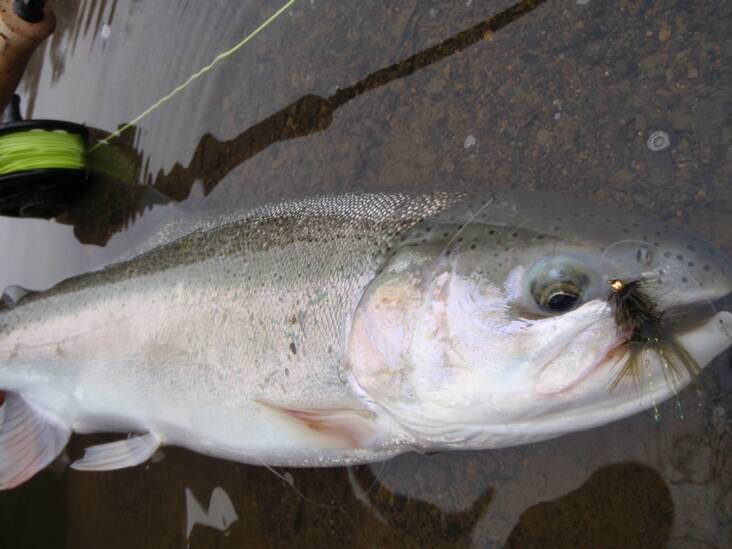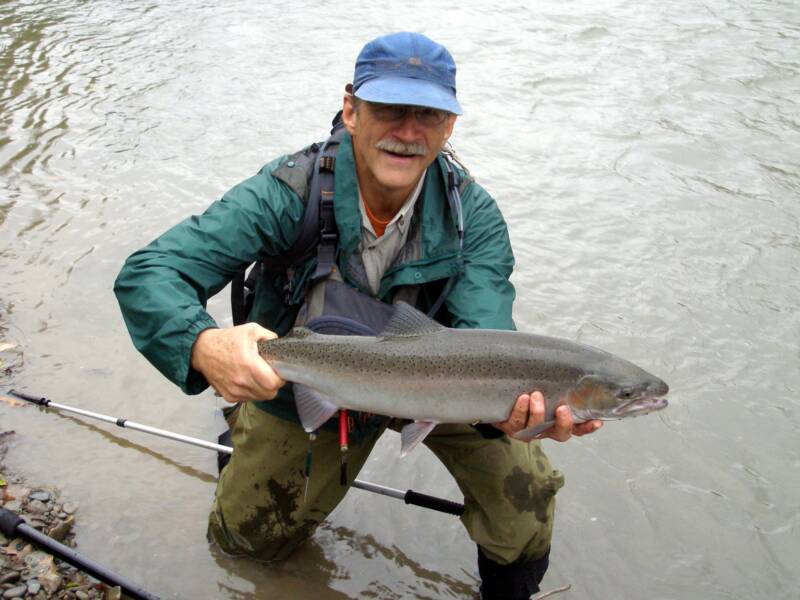Steelhead Fishing in Lake Erie Tributaries
From its mouth at Lake Erie upstream 34 miles to the Springville Dam, Cattaraugus Creek supports an outstanding run of Lake Erie steelhead. The Cattaraugus is a large stream, averaging over 100 feet wide and varying from slow water near Lake Erie to boulder filled rapids in the scenic Zoar Valley area. Each year from October through April, thousands of steelhead ascend the stream to spawn. In addition to steelhead, a fair number of brown trout also run the stream in fall. Virtually all of the lower 14 miles of Cattaraugus Creek are located on the Seneca Nation of Indians Reservation. Anglers wishing to fish on the Reservation must purchase a license from the Seneca Nation; however anglers do not need a New York State license on Seneca Nation lands. Over seven miles of the Cattaraugus main stream and South Branch flow through public land on the DEC Zoar Valley Multiple Use Area.
Lake Erie's tributary streams, both big and small, receive an annual run of migratory rainbow trout called "steelhead." Excellent fishing opportunities await any angler who wishes to try their hand at steelhead fishing. Between the acrobatic leaps, long drag-screaming runs and rod quaking head shakes, the fight of an early run steelhead is a truly exhilarating experience. It is no wonder that this steelhead fishery draws anglers from across New York, surrounding states, and Canada.
New York's Lake Erie steelhead fishery is supported by an extensive stocking program and natural reproduction. Current NYS DEC stocking targets are 230,000 Washington strain yearlings that are stocked annually between 9 major tributaries. In recent years, the DEC has also stocked surplus Skamania strain steelhead in Cattaraugus Creek when available. Stocked steelhead typically spend two years in the open lake, feeding on smelt and other forage, before maturing and returning to the tributaries as three year olds. Besides steelhead, brown trout and a small number of domestic rainbow trout are stocked into Lake Erie as yearlings. These stockings supplement and diversify the harbor, main lake and tributary fisheries. In addition to stocking, the steelhead population is further supplemented by natural reproduction in the New York tributaries, most notably Cattaraugus Creek and its feeder streams.
The Washington strain is a winter run, anadromous strain of rainbow trout (steelhead) derived from eggs imported from the state of Washington. In Washington, the native stock migrate between the Pacific Ocean, where they do most of their growing, and freshwater mountain streams, where they spawn. Similarly, the naturalized Washington strain steelhead in Lake Erie utilize the lake for the bulk of their feeding/growing and the tributary streams for spawning. Mature Washington strain steelhead enter the Erie tributaries as early as mid-September; however the bulk of the run occurs from mid-October through April.
The Skamania strain also originates from the state of Washington. This anadromous strain is considered a summer-run fish as they have the potential to enter streams earlier than Washington strain fish. The DEC has stocked Skamania steelhead in Cattaraugus Creek since 2005 with the hopes of boosting the early runs by having fish enter the creek in late August through September. A portion of stocked Skamania steelhead have a double fin clip: adipose fin and left pectoral fin.

